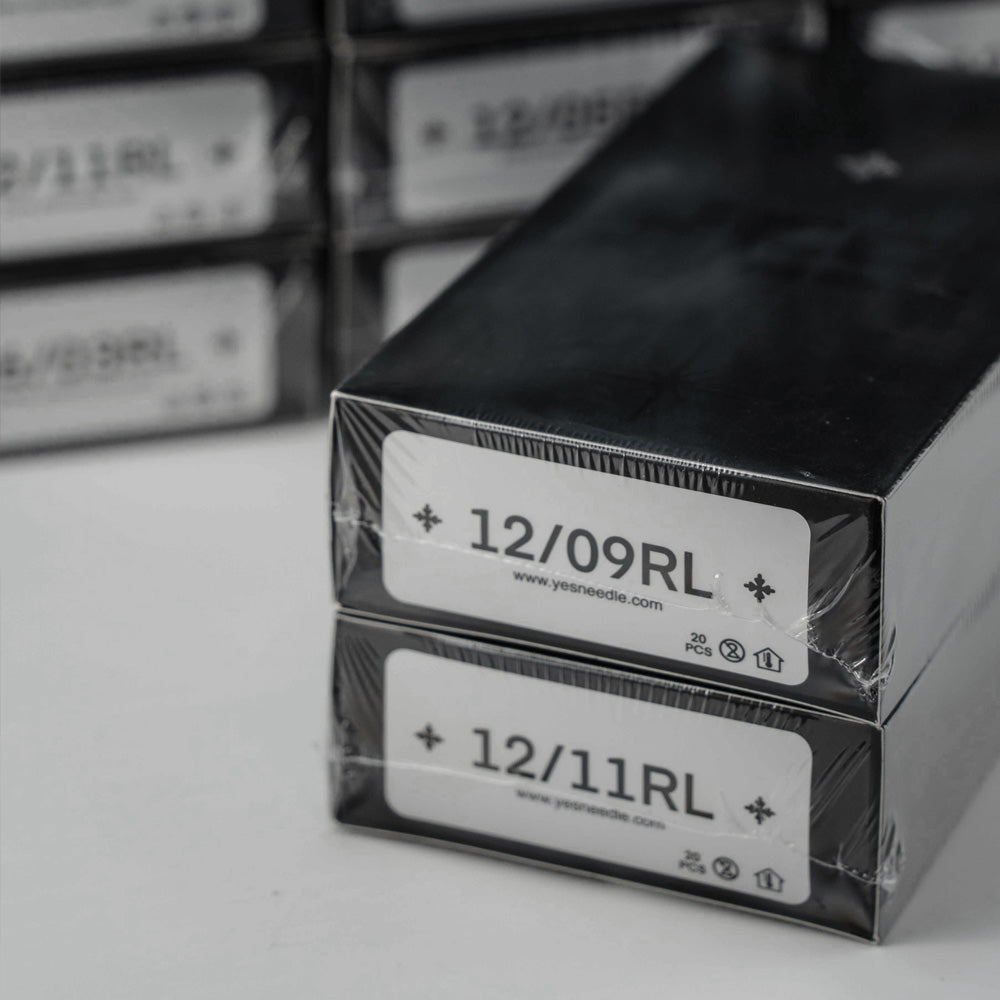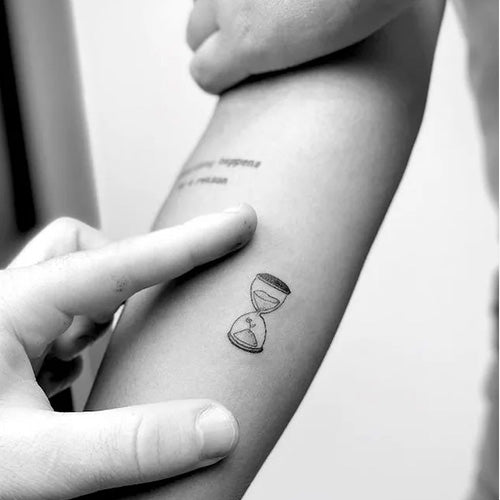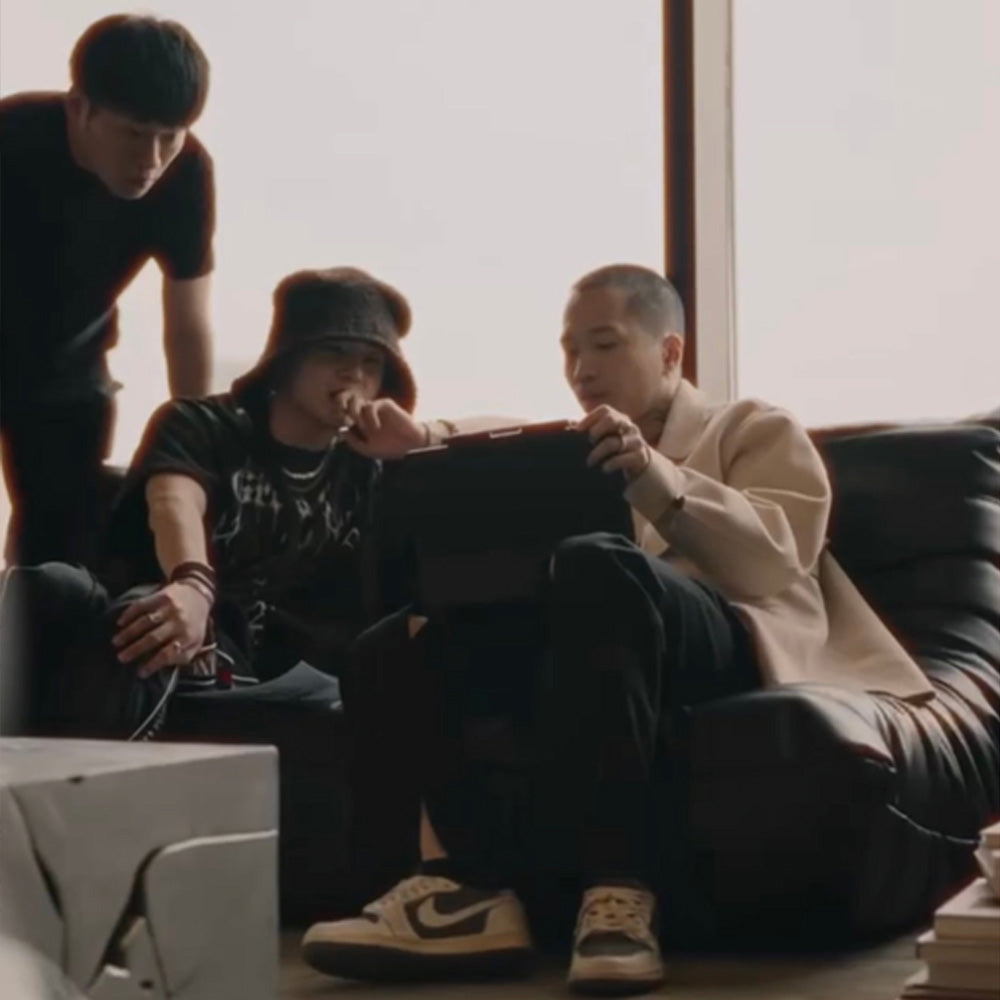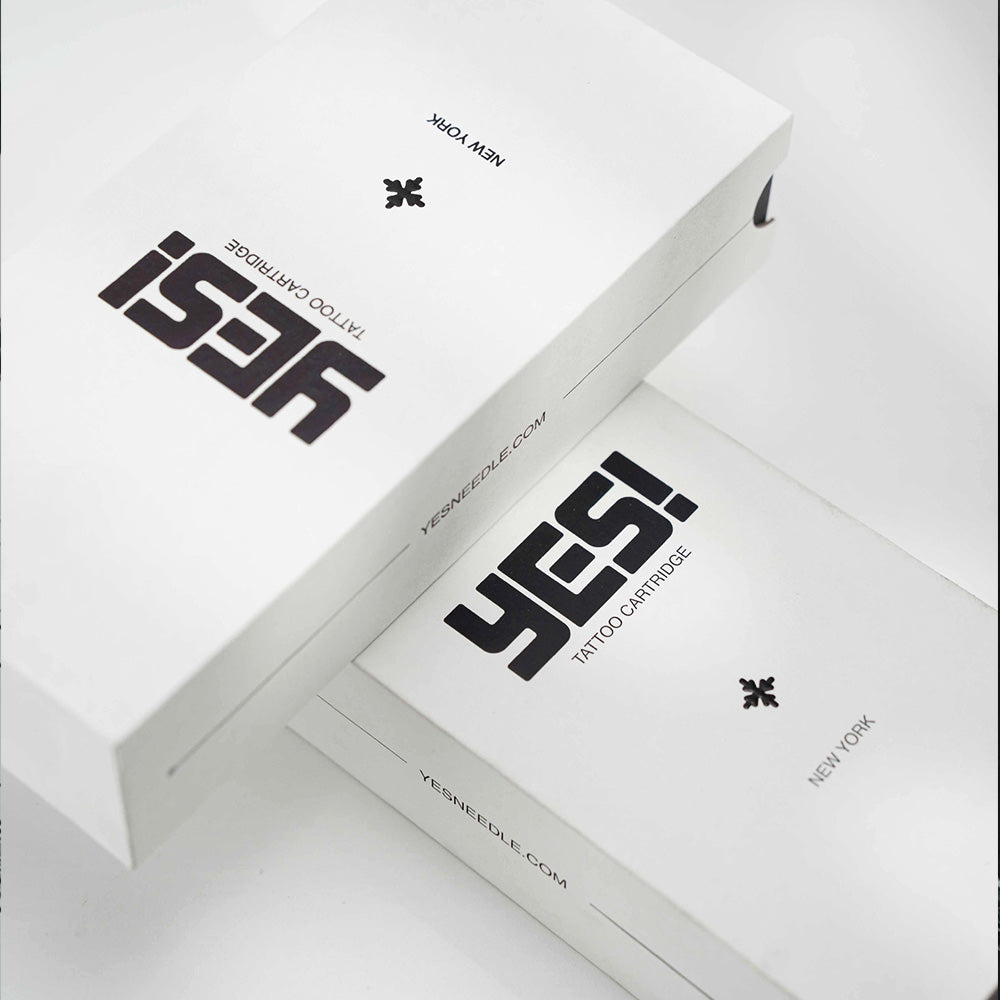Quelle est la durée de vie de l'encre de tatouage UV ? La vérité que chaque artiste doit connaître
Une cliente est revenue trois ans plus tard pour demander pourquoi son tatouage de constellation "invisible" avait complètement disparu. Il ne s'était pas estompé, il avait disparu. Elle était dévastée. J'ai dû lui expliquer que les tatouages UV ne durent pas comme l'encre ordinaire, et j'aurais aimé que quelqu'un me le dise avant que je ne commence à travailler à la lumière noire.
Cette expérience m'a appris quelque chose de crucial : L'encre de tatouage UV a une durée de vie complètement différente de l'encre traditionnelle, et si vous ne gérez pas correctement les attentes de vos clients, vous vous exposez à des clients déçus et à une réputation ternie.
Abordons l'éléphant dans la pièce : L'encre UV s'estompe beaucoup plus rapidement que l'encre ordinaire pour des raisons techniques spécifiques. Si vous envisagez de proposer des tatouages à la lumière noire, vous devez savoir exactement ce que vous promettez et ce que votre équipement doit fournir.
La réponse honnête : Durée de vie de l'encre de tatouage UV
Durée de vie visible moyenne : 3 à 5 ans
Comparez cela à l'encre noire traditionnelle qui dure 10 à 20 ans ou plus avec des soins appropriés. C'est une énorme différence.
Les tatouages UV ne disparaissent pas complètement - leur visibilité diminue, en particulier sous la lumière noire :
Années 1-2: Brille fortement sous la lumière UV, peut être faiblement visible à la lumière du jour:
Années 3-5: L'intensité de la lueur diminue de 40 à 60 %, elle est plus difficile à voir à la lumière noire:
Années 5+: Ne conserve que 20 à 30 % de sa luminosité d'origine, les couleurs changent.
Toutes les encres UV ne se décolorent pas de la même manière
Les plus durables (5-8 ans) :
- Encre UV blanche
- Encre UV jaune pâle
Duréemodérée (4-6 ans):
- Encre fluorescente verte, orange, rose
Durée de vie la plus courte (2-4 ans):
- Encre UV bleue (se décolore en jaune/brun)
- Encre UV violette
- Encre UV totalement transparente/invisible
Tukoi Oya, spécialiste australien de la lumière noire : "Ils durent environ 5 ans et s'estompent progressivement, tout comme les tatouages normaux. Mais elle note qu'elle a vu un tatouage UV datant "d'environ un an et demi" qui semblait encore "très frais".
L'expression clé ? "Un an et demi". Posez-lui à nouveau la question dans cinq ans.

Pourquoi l'encre UV se décolore plus vite (La science)
Comprendre pourquoi vous permet de réaliser de meilleurs tatouages et de fixer des attentes réalistes.
Différences de composition chimique
Encre noire traditionnelle :
- Pigment à base de carbone
- Structure moléculaire extrêmement stable
- Résiste à la dégradation par les UV
- Particules de grande taille (restent dans le derme)
Encre fluorescente UV :
- Contient des composés phosphorescents ou des colorants fluorescents
- Structure moléculaire moins stable
- Se décompose sous exposition aux UV (ironiquement)
- Particules de plus petite taille (plus faciles à décomposer pour l'organisme)

Le paradoxe de l'exposition au soleil
Voici une cruelle ironie : ce qui fait briller les tatouages UV les rend également vulnérables aux dommages causés par le soleil.
Lorsque les tatouages UV rencontrent la lumière du soleil :
1.Les rayons UV décomposent les molécules fluorescentes
2.Les particules d'encre perdent leur capacité à briller
3.Les couleurs changent (bleus → jaunes, roses → bruns)
4.La luminosité diminue de façon permanente
Le Dr Marie Hayag explique : "Comme les tatouages normaux, ils s'estompent avec le temps et nécessitent des retouches : "Comme les tatouages classiques, ils s'estompent avec le temps et nécessitent des retouches. Plus l'exposition au soleil est importante, plus le tatouage s'estompe rapidement et plus il devient terne sous la lumière noire".
Traduction : Cette jolie constellation au poignet ? Si vous n'utilisez pas de crème solaire, elle sera à moitié effacée dans 18 mois.
Réponse immunitaire de l'organisme
Le système immunitaire de votre client traite l'encre de tatouage comme une substance étrangère et la décompose lentement. Avec l'encre UV :
- Taille des particules plus petite = dégradation plus rapide
- Composés moins stables = plus facile à détruire pour les macrophages
- Résultat : Décoloration accélérée par rapport à l'encre traditionnelle
Cinq facteurs qui influencent la longévité des tatouages UV
1. Qualité de l'encre (le facteur le plus important)
Le problème : l'encre de tatouage UV n'est pas réglementée par la FDA. La qualité varie énormément.
Ce que j'ai appris :
- Encres UV bon marché (Amazon/eBay) : Se décolorent en 1 à 2 ans
- Qualité professionnelle (Waverly Colors, Kuro Sumi Glow, Dr. Pickles) : 4-6 ans en moyenne
- Certaines contiennent du phosphore (toxique mais durable)
- D'autres utilisent des composés fluorescents plus sûrs (plus sûrs mais s'estompant plus rapidement)
Kayla Newell de Secret Club Tattoo l'a appris à ses dépens : "Mon premier tatouage à la lumière noire a été réalisé par moi-même en utilisant de l'encre rose UV de très mauvaise qualité provenant d'Amazon... Tout le rose s'est presque effacé mais, étrangement, il brille encore sous la lumière noire".
Conseil aux artistes : si vous proposez des tatouages UV, investissez dans des marques réputées. Les 20 dollars économisés sur une encre bon marché coûtent cher à votre réputation.
2. Lieu de placement
Durée la plus longue: Haut du dos, intérieur du bras, cage thoracique, derrière l'oreille
Durée la plus courte: Mains (soleil + frottement), pieds (frottement + soleil), avant-bras (exposition au soleil)

3. Type de peau du client
- Peau grasse: S'estompe 15 à 20 % plus rapidement
- Peau sèche: Vitesse d'atténuation normale
- Peau mature (40+) : Ajoutez 20 % à la vitesse de décoloration
- Peaux plus foncées: L'éclat initial peut être moins brillant, ce qui rend la décoloration plus visible.

4. Exposition au soleil (le tueur)
L'exposition au soleil est la première raison pour laquelle les tatouages UV s'effacent prématurément.
Tatouage UV sur une zone couverte (cage thoracique) : 6-7 ansMême tatouage sur un avant-bras exposé quotidiennement au soleil : 2-3 ans maximum
5. Suivi et entretien
Les clients qui :
- Utilisent quotidiennement un écran solaire FPS 50+ : Ajouter 1 à 2 ans
- Hydratent régulièrement : Ajouter 6-12 mois
- Éviter l'excès de soleil : Ajouter 1 à 2 ans
- Se font faire des retouches en temps voulu : conservent leur apparence indéfiniment
Défis techniques du travail sous UV
Les tatouages UV sont techniquement plus difficiles et l'équipement joue un rôle encore plus important.
Défi 1 : Cohérence de l'encre
Le problème: L'encre UV est beaucoup plus fine que l'encre traditionnelle.
Quinton McCloud de Karmic Tattoo : "Avec les dents, j'ai utilisé un shader et il est devenu très irritant. C'était bizarre parce que je fais tourner ma machine assez bas. Il est très rare que mes tatouages soient aussi irrités."
Pourquoi c'est plus difficile :
- L'encre plus fine s'écoule différemment à travers les aiguilles
- Il faut plusieurs passages pour saturer
- Il est facile de surtravailler la peau (ce qui entraîne des cicatrices)
- Cicatrices = mauvaise rétention = décoloration plus rapide
La solution: Des aiguilles avec des tolérances de fabrication précises pour contrôler l'écoulement de l'encre UV fine.
Des aiguilles économiques avec une variation de 0,1 à 0,2 mm provoquent une saturation inégale. Résultat ? Certaines parties se décolorent en moins d'un an alors que d'autres durent 3 à 4 ans, ce qui crée un aspect irrégulier et peu professionnel.
J'ai opté pour les cartouches de précision Yesneedle spécialement conçues pour les travaux UV pour les raisons suivantes :
Alignement microscopique des aiguilles: Chaque aiguille est précisément adaptée, ce qui est essentiel pour le contrôle de l'encre UV fine : Permet de voir le flux d'encre UV fine en temps réel et de détecter les obstructions avant qu'elles n'affectent le tatouage
Membrane de haute qualité: Empêche le reflux de l'encre UV (encre plus fine = plus susceptible de reflux)
La différence de coût est de 1,50 $ par aiguille. Lorsqu'un client paie pour un tatouage qui durera plusieurs années, ces 1,50 $ sont un investissement qui ne pose pas de problème.

Défi 2 : Visibilité pendant l'application
Le problème : vous ne pouvez pas voir ce que vous faites sous une lumière normale.
Samantha Ceora de Ceora Ink : "Une lumière UV doit être utilisée périodiquement tout au long du processus... le but est de créer un tatouage invisible."
Cela signifie:
- Passer constamment de la lumière normale à la lumière noire
- Difficile d'évaluer les niveaux de saturation
- Facile de rater des points ou de créer une couverture inégale
- On ne peut pas compter sur le retour visuel comme avec l'encre traditionnelle
Exigences techniques : Source de lumière noire de haute qualité, cartouches d'aiguilles transparentes (l'opacité rend le contrôle impossible), patience et temps supplémentaires.
Défi 3 : Sensibilité à la contamination
Règle essentielle: L'encre UV ne peut pas toucher d'autres couleurs, sinon elle perd de son éclat.
Dillon Forte met en garde : "L'artiste doit veiller à ne pas mélanger des pigments standard, plus foncés, avec du sulfure de zinc, car cela pourrait en réduire l'éclat.
Kayla Newell ajoute : "Les encres néon sont épaisses comme de l'encre blanche : "Les encres néon sont épaisses, comme de l'encre blanche. Vous devez veiller à ce qu'elles ne se séparent pas ou ne se mélangent pas à d'autres couleurs. Si quelque chose de sombre est étalé, cela affecte négativement la capacité de brillance."
Meilleures pratiques:
- Pointes fraîches et jetables pour les sections UV
- Nettoyer complètement le pochoir avant les portions UV
- Ne jamais contaminer les aiguilles entre l'encre ordinaire et l'encre UV
- Envisager les portions UV lors d'une session séparée si le dessin est complexe.

Défi 4 : Contrôle de la profondeur
L'équilibre: L'encre UV a besoin de la profondeur du derme pour être permanente, mais un travail excessif amenuise l'effet.
Profondeur recommandée : 1,0-1,5 mm (légèrement moins profonde que la profondeur traditionnelle de 1,5-2 mm)
Pourquoi moins profonde ?
- Une encre plus fine ne nécessite pas une pénétration profonde
- Réduit les traumatismes cutanés (essentiel pour les passages multiples)
- Moins de cicatrices = meilleure rétention à long terme
Matériel de tatouagerequis: Contrôle précis de la protrusion de l'aiguille, machine à course réglable (3-3,5 mm idéalement), pression de la main plus légère que pour l'encre ordinaire.
Comment maximiser la durée de vie des tatouages UV
Si vous travaillez dans le domaine des UV, voici comment offrir à vos clients la meilleure longévité possible :
1. Plusieurs passages avec une légère pression
Ne pas saturer en 1 ou 2 passages agressifs
Faire : 3-4 passages doux, en laissant la peau se reposer entre
L'encre UV fine nécessite de toute façon plusieurs passages. Les passages doux réduisent les traumatismes et les cicatrices.
2. Placement stratégique
Guidez les clients vers: Les zones pouvant être couvertes par le soleil, les surfaces à faible frottement et relativement plates.
Éloigner: Les mains/pieds, les zones fortement exposées au soleil, les zones de frottement (ceinture, soutien-gorge)
3. Appliquer l'encre UV de manière stratégique
Tukoi Oya conseille : "Lorsque vous ajoutez de l'encre UV ici et là, c'est du plus bel effet. N'en faites pas trop. Depetits points ou de petites sections de couleur donnent de meilleurs résultats."
Meilleures applications: Petits accents sur des tatouages ordinaires, points et détails fins, motifs de constellations, éléments cachés révélés à la lumière noire.
À éviter: Les grands aplats (s'estompent de manière inégale), les lignes uniques très fines (s'estompent au bout de 2 ans), les motifs trop complexes (risques de contamination)
4. Instructions détaillées sur les soins à apporter
Les 2 premières semaines: Identique aux soins habituels, éviter complètement la lumière directe du soleil, utiliser Second Skin pour les grandes sections UV
Entretien continu: Protection solaire quotidienne SPF 50+, éviter les lits de bronzage et le soleil prolongé, hydrater avec une lotion sans parfum, prévoir des retouches tous les 3-4 ans
5. Proposer des retouches régulières
La réalité: Les tatouages UV doivent être retouchés pour rester visibles.
Stratégie: Intégrer le calendrier des retouches dans la consultation, offrir des tarifs réduits aux premiers clients, prévoir un suivi tous les trois ans.
Cela permet de gérer les attentes et de fidéliser les clients.

Le tatouage UV vaut-il la peine d'être proposé ?
✅Pros :
- Une offre unique qui attire les clients
- Un prix plus élevé (travaux spécialisés)
- Une clientèle fidèle (retouches)
- Un travail amusant et créatif
- Un intérêt croissant pour les tatouages à la lumière noire
❌Cons :
- Nécessite un équipement et un éclairage spécialisés
- Risque accru de déception du client
- Plus difficile sur le plan technique que le travail normal
- Problèmes de contamination en cas de mélange avec des tatouages normaux
- Nécessité d'une formation approfondie en matière de suivi
- Risque d'atteinte à la réputation en cas de gestion inadéquate
Ne proposer des tatouages UV que si :
1. vous êtes prêt à investir dans du matériel de qualité professionnelle (cartouches Yesneedle, lumière noire de qualité)
2. vous vous sentez à l'aise lors de consultations honnêtes et détaillées sur les limites
3. vous êtes prêt à documenter les attentes du client par écrit
4. vous avez la patience de relever les défis techniques
5. vous proposez cette activité comme un accent/un complément, et non comme votre travail principal.
Ne proposez pas de tatouages UV si :
- Vous utilisez du matériel bon marché
- Vous voulez des pièces rapides et faciles
- Vous n'êtes pas à l'aise pour gérer des clients déçus
- Vous ne voulez pas investir dans une installation d'éclairage appropriée
- Vous essayez d'être compétitif sur le plan du prix par rapport à la qualité
Le bilan
L'encre de tatouage UV dure en moyenne 3 à 5 ans, soit beaucoup moins longtemps que les tatouages traditionnels. L'effet lumineux s'estompe en raison de l'instabilité chimique, de l'exposition au soleil et de la réaction immunitaire du corps. Les couleurs changent, la luminosité diminue et des retouches deviennent nécessaires.
Si vous proposez des travaux en UV :
- Utiliser du matériel de qualité professionnelle (en particulier des aiguilles de précision comme Yesneedle)
- Fixer des attentes très honnêtes avec chaque client
- Consigner les consultations par écrit
- Investir dans un éclairage et une technique appropriés
- Prévoir un modèle commercial pour les retouches
- Choisir des placements et des applications stratégiques
La vérité que personne n'a envie de dire: Les tatouages UV offrent une visibilité magnifique mais temporaire. Ce ne sont pas des tatouages éternels - ce sont des tatouages de 3 à 5 ans avec entretien. Si vous ne pouvez pas communiquer cela clairement à vos clients, ne proposez pas de travaux sous UV.
Lorsqu'ils sont bien réalisés avec un équipement approprié, des attentes honnêtes et des compétences techniques, les tatouages sous UV peuvent être des travaux spécialisés gratifiants. Lorsqu'ils sont mal faits, ils nuisent à la réputation.




